Learn about Bulgarian Christmas customs and bake delicious baklava!
25. 4. 2024
What will you learn in this article?
Although Bulgaria is an Orthodox country, Christmas is unusually celebrated here in December.
Why is Christmas dinner meatless and how many courses should it have?
Do you know what curd cheese is and what it looks like?
Why slice the apple, from which the Bulgarians “predict” their future?
Come and discover together how Christmas is celebrated in Bulgaria.
When is Christmas celebrated in Bulgaria?
Many Eastern European countries celebrate Christmas on January 7 because most Orthodox churches use the old Julian calendar. Still, the Bulgarian Orthodox Church uses the Gregorian calendar, so Christmas in Bulgaria is December 24.
For most Bulgarians, preparations for the holidays begin with Advent, which lasts 40 days in the Orthodox Church, starting on November 15. Throughout Lent, Orthodox Bulgarians avoid alcohol and animal products. Even Christmas Eve dinner is vegetarian and contains no meat, cheese, milk, eggs, or animal oils. How did the tradition of fasting come about?
One of the Bulgarian legends says that Maria went into labor on December 20 on Ignazhden (the feast of St. Ignatius of Antioch) and gave birth on Christmas Day. The birth of Jesus was not announced until a day later, on Christmas Eve.
Do you know Bulgarian Christmas traditions?
Christmas in Bulgaria is associated with many customs and traditions, many of which are related to the Christmas Eve dinner itself. Straw is often placed under the tablecloth, which in the past was supposed to ensure a good harvest in the new year.
Fortune telling is also done at the Christmas Eve table. To predict what the year will be, everyone cracks a nut. If it is good and tasty, it will be a lucky year, if the nut is empty, a bad year can be expected. Another custom is that the table is left with all the food until the morning of December 25, supposedly for dead ancestors who might feel like eating something during the night.
After midnight on December 24, you will hear “koledari” singing in the streets of Bulgaria. Who are “koledari” and what do they look like? A group of carolers – “koledari” walk around a village or town and when they come to a house, they sing a “house song” in which they praise it and wish it well.
The carolers also have special dogwood sticks, or “svarkas”, with which they bang on doors and for which they should be given a reward as a thank you, traditionally carol “gevreci” (round buns with a hole). But the curd is also followed by bows or dried fruit.
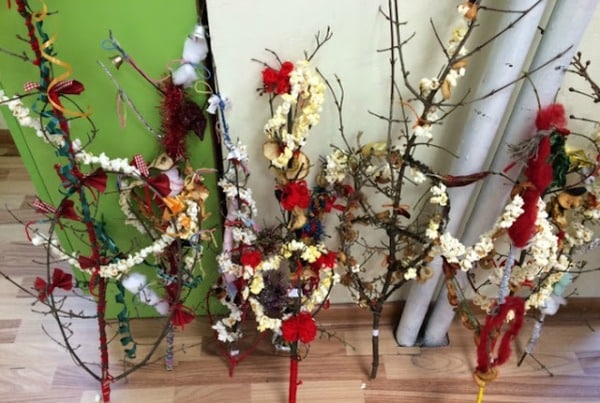
Who brings the children’s presents?
In the past, Santa Claus brought gifts to Bulgarian children just like in the former Soviet Union on New Year’s Day. Since the 1990s, however, the traditional Dyado Koleda, or Santa Claus, has slowly started to return, and he brings gifts to children on the night between December 24 and 25.
Children unwrap gifts under the tree, in addition to coniferous Christmas trees, in some families you can still find a traditional “badnik” or “budnik”, a large piece of wood from an oak or pear tree, properly brought by a healthy young man, which is placed in the fireplace on Christmas Day.
Similar articles
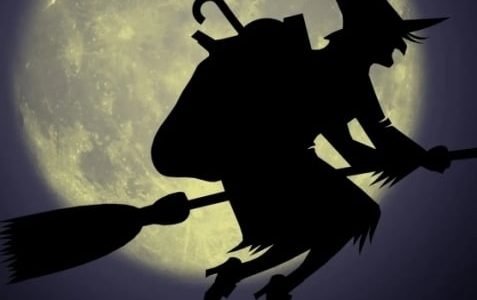
How do Italians celebrate Christmas and what are their customs?
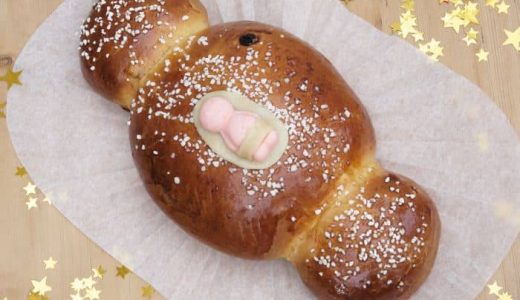
Do you know how Christmas is celebrated in Belgium? Learn about Belgian Christmas traditions in our article

How is the traditional French Christmas celebrated? Who is Père Noël and what is Réveillon?
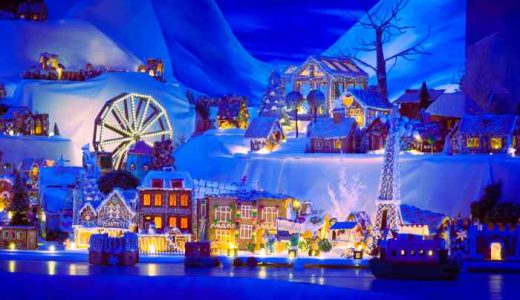
Get to know the magic of Norwegian Christmas and Julenissen the elf. God Jul!
What is eaten in Bulgaria at Christmas?
On Christmas Eve, there is a main Christmas meal called Budni Vecher. Dinner should traditionally have an odd number of meatless dishes, most often nine or eleven. Common dishes are a bean soup called bob chorba, cabbage leaves or peppers stuffed with rice, boiled wheat with sugar and nuts, various types of bread, lots of fruit and nuts, and also ošav, a compote made of dried fruits.
After midnight, banitsa (a puff pastry filled with yogurt and salty cheese) and baklava (a puff pastry dessert with nuts dipped in honey) are served.
A special round and decorated loaf of bread in which a coin is baked is also a traditional part of the dinner. If you find it, you should be lucky in the coming year. The bread is usually cut by the oldest person at the meal and passed around the table.
Following Christmas Eve, a big family lunch is usually held, where mainly pork dishes are served.
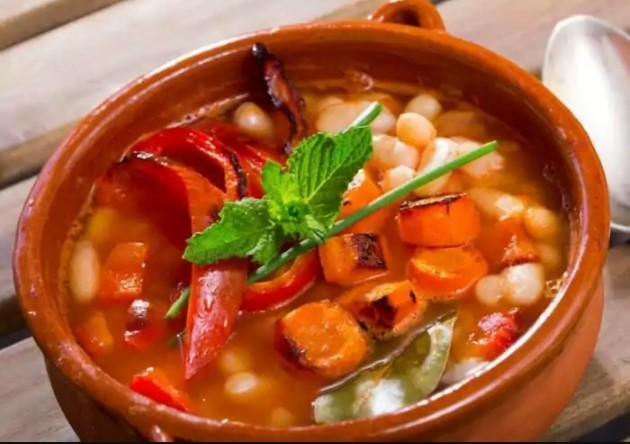
How to bake your baklava?
The sweet dessert baklava is typical not only of Bulgarian cuisine but of the entire Balkans, Turkey, and Central Asia. We bring you the classic recipe that requires thin layers of a special puff pastry known as filo.
Ingredients:
- 18oz filo puff pastry
- 1 cup ground walnuts
- 1 1/2 cup of sugar
- 1 1/2 cup of butter
- 1 cup of water
- 4 tablespoons of honey
- 2 tablespoons of lemon juice
- 1 teaspoon ground cinnamon
- a few whole walnuts for garnish
Method:
- First, prepare the syrup.
- Put water, sugar, honey, and lemon juice in a saucepan.
- Cook over low heat, stirring occasionally, until the ingredients form a uniform syrup.
- Set aside and let cool.
- Mix ground nuts with cinnamon in a bowl.
- Then prepare Filo puff pastry, which differs from the classic one in that it is thinly sliced, and traditionally used in Balkan cuisine.
- Cut the slices according to the shape and size of the mold you want to use.
- Melt the butter.
- Preheat the oven to 338°F with a fan.
- Butter the tin and then place the first few sheets of puff pastry in it, brushing each one with melted butter before placing the next one on top.
- Adapt the number of slices to the size of the mold, traditionally 8-10 slices are placed on the bottom.
- Spread a layer of nuts and cinnamon on the last buttered sheet.
- Then put 4-5 layers of buttered dough on the nuts.
- Apply nuts again on the last sheet and continue like this.
- The uppermost layer should again have 8-10 slices, like the lower part.
- Then, with a sharp knife, cut the baklava into the desired shapes, usually small pieces shaped like a rectangle or a diamond.
- Decorate each piece with half or a quarter of a walnut.
- Place the mold in the oven and bake at 338°F for approximately 60 minutes.
- If you feel like the top is browning too much, cover it with foil.
- After removing it from the oven, pour the pre-prepared syrup over the still-warm dessert.
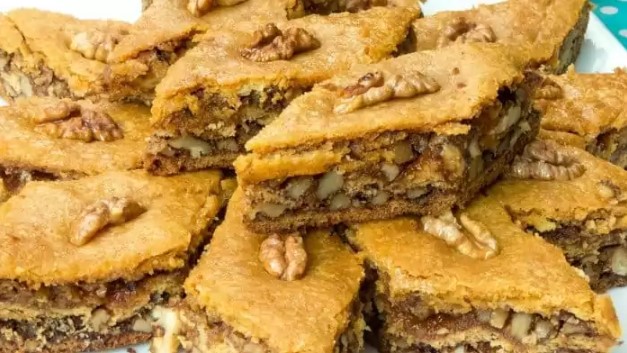
What places to visit in Bulgaria at Christmas?
Christmas in Bulgaria is one of the most magical times of the year. All the streets are covered with Christmas lights, there are many Christmas markets and events for the upcoming holidays.
- Sofia – Bulgaria’s capital is beautifully decorated at Christmas time and offers plenty of places to see, from the famous St Alexander Nevsky Cathedral to museums and galleries. Traditional Christmas markets are held in the city center, where you can fully enjoy the atmosphere of Bulgarian Christmas.
- Plovdiv – is an excellent choice to visit during the winter season. The city center is known for its unique architecture and is always beautifully decorated during Advent. Additionally, the local Philippopolis ancient theater and the Kapana district, which is full of pubs, cafes, and restaurants offering delicious dishes, are also worth a visit.
- Veliko Tarnovo – the beautiful Marno Pole Park turns into a festive center every year with wooden stands selling decorations, sweets, mulled wine, and all sorts of goodies. Throughout December, a special mailbox remains open here, where you can send important letters to Santa.

